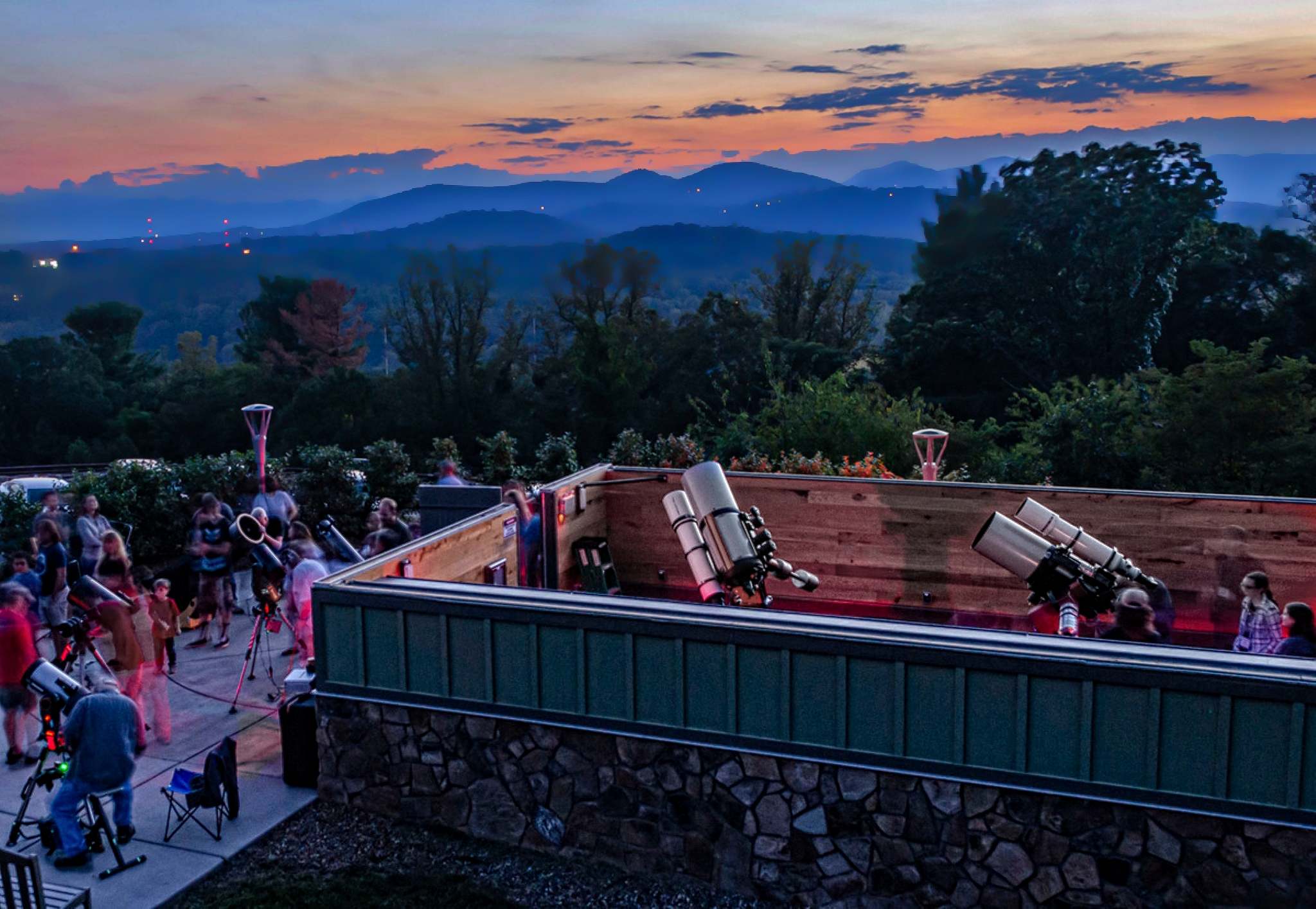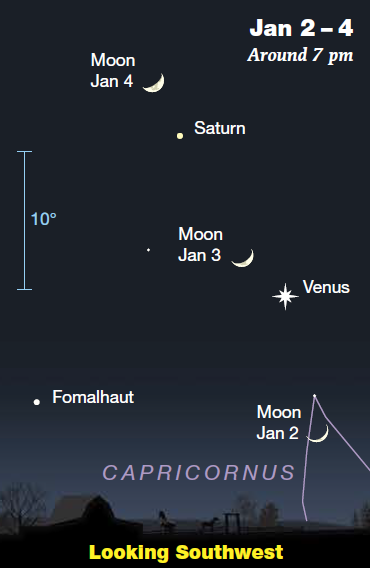 2-4 Jan. 2025
2-4 Jan. 2025
– A Crescent Moon Sails by Venus and Saturn
Illustration courtesy of
SKY & TELESCOPE
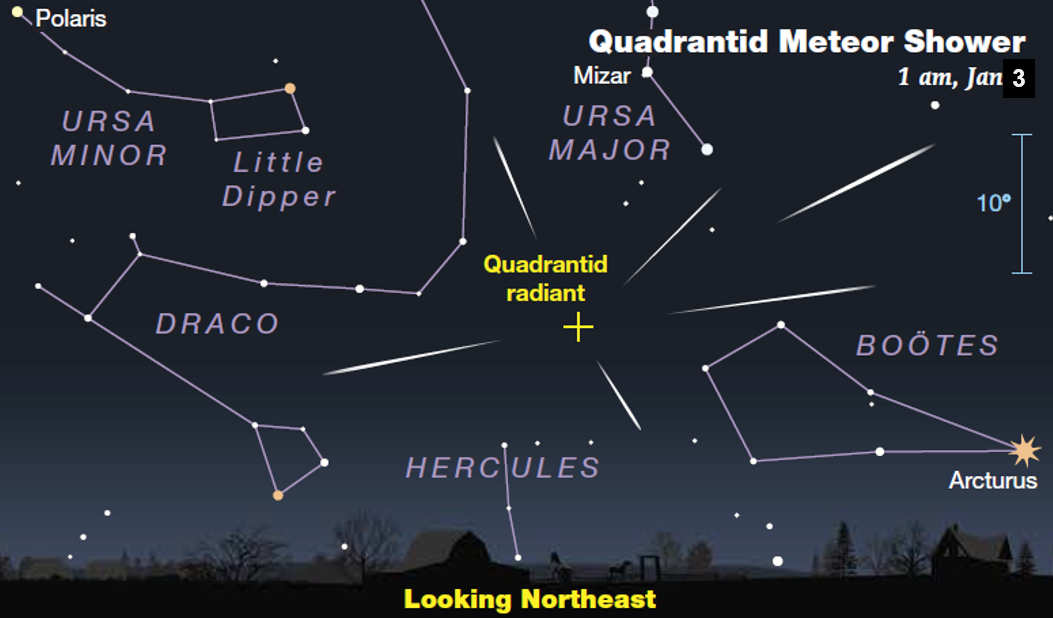 2/3 Jan. 2025
2/3 Jan. 2025
– Quadrantid Meteor Shower Peaks
Illustration courtesy of
SKY & TELESCOPE
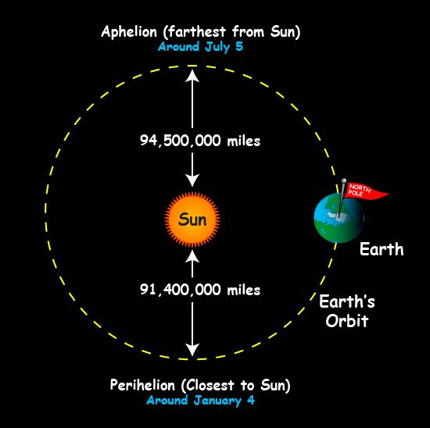 4 Jan. 2025
4 Jan. 2025
– Earth Closest to the Sun for 2025
Two Public Star Gazes in January
Continue to check this home page as weather could change the venue or postpone and possibly cancel a star gaze. Check again after 4:00 p.m. on the afternoon of the observing session for the latest info and update.
24 Jan. 2025 — Friday night — The location for this star gaze will be Lookout Observatory on the UNC Asheville campus, with a weather backup date of Saturday, 25 January. While the event is free and open to everyone, pre-registration is required to attend. To learn more about how to register, please visit the UNCA Lookout Observatory website here. Sunset occurs at 5:49 p.m., with shuttle service beginning about 6:30 p.m.
31 Jan. 2025 — Friday night — This public star gaze will be held at Grassland Mountain Observatory in Madison County, with a weather backup night of Saturday, 1 February. This event is free and open to everyone — registration is not necessary to attend. A temporary gate code, required for entry, will be provided here on the day of the star gaze by 4:00 p.m. Directions to Grassland Mountain Observatory can be found here. These star gazes normally conclude about 3 to 4 hours after sunset, and visitors are not permitted to stay past the conclusion time. Sunset occurs at 5:57 p.m.
6 Feb. 2025 – Club Meeting Presentation
— Thursday night, 7:00 – 8:30 p.m.
This free speaker presentation will be offered in-person at the UNC-Asheville Reuter Center and virtually online. Registration is not required; use this Zoom link to watch the presentation remotely.
Although parking for this meeting at the Reuter Center is free, you must register your vehicle with a “visitor daily” permit at this link.
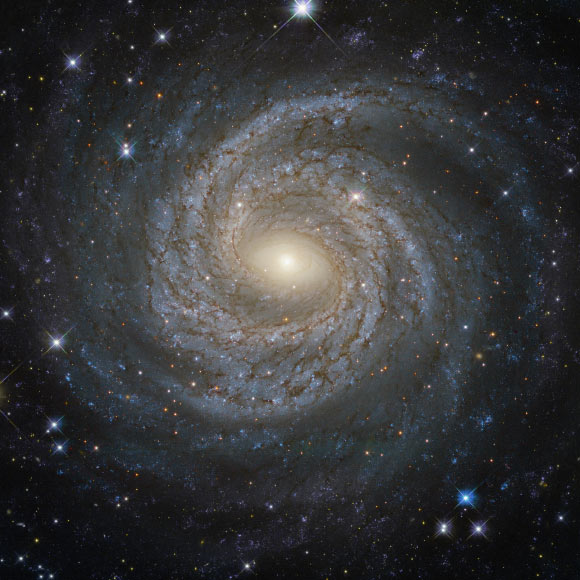 Multi-Armed vs. Grand Design Galaxies: Why Are They Different?
Multi-Armed vs. Grand Design Galaxies: Why Are They Different?
– presented by Beverly Smith, Ph.D.,
East Tennessee State University
More than 170 years after spiral galaxies were discovered, how their spiral arms are generated and maintained is still uncertain. One way to distinguish between possible scenarios is to count the number of spiral arms in galaxies and compare them with other properties of the galaxy. Read more…


